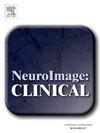A practical overview of the use of amyloid-PET Centiloid values in clinical trials and research
IF 3.6
2区 医学
Q2 NEUROIMAGING
引用次数: 0
Abstract
The density of brain amyloid-beta neuritic plaque accumulation, a marker of Alzheimer’s disease (AD), can be visualized and quantified using amyloid-positron emission tomography (PET). Amyloid-PET data can be obtained using different tracers and methodologies; therefore, comparison across studies can be difficult. The introduction of Centiloids in 2015 allowed for the transformation of amyloid-PET quantitative data to a common scale, enhancing comparability across studies and potentially enabling pooled analysis. Since then, Centiloid values have been used increasingly in research and clinical trials for multiple purposes, being tested and validated with a variety of clinical, biomarker and pathological standards of truth. In clinical trials, Centiloid values have been used for patient selection, to confirm the presence of AD pathology, as well as for treatment monitoring, especially in trials of disease-modifying treatments such as amyloid-targeting therapies. Building on their widespread adoption, Centiloid values are increasingly being integrated into commercially available software solutions for quantifying amyloid-PET, paving the way for real-world applications at the community level. This article addresses frequently asked questions about Centiloid definition, implementation, interpretation, and caveats, and also summarizes the available literature on published thresholds, ultimately supporting wider access and informed use of Centiloid values in Alzheimer’s disease research.
淀粉样蛋白- pet Centiloid值在临床试验和研究中的实际应用综述
作为阿尔茨海默病(AD)的标志,脑淀粉样蛋白- β神经斑块堆积密度可以通过淀粉样蛋白正电子发射断层扫描(PET)进行可视化和量化。淀粉样蛋白pet数据可以使用不同的示踪剂和方法获得;因此,跨研究比较可能很困难。2015年引入的Centiloids允许将淀粉样蛋白- pet定量数据转化为通用尺度,增强了研究之间的可比性,并有可能实现合并分析。从那时起,Centiloid值越来越多地用于多种目的的研究和临床试验,并通过各种临床,生物标志物和病理标准进行测试和验证。在临床试验中,Centiloid值已被用于患者选择,以确认AD病理的存在,以及治疗监测,特别是在诸如淀粉样蛋白靶向治疗等疾病改善治疗的试验中。基于它们的广泛应用,Centiloid值越来越多地被集成到商用软件解决方案中,用于量化淀粉样蛋白- pet,为社区层面的实际应用铺平了道路。本文解决了有关Centiloid定义、实施、解释和注意事项的常见问题,并总结了有关已发表阈值的现有文献,最终支持在阿尔茨海默病研究中更广泛地获取和使用Centiloid值。
本文章由计算机程序翻译,如有差异,请以英文原文为准。
求助全文
约1分钟内获得全文
求助全文
来源期刊

Neuroimage-Clinical
NEUROIMAGING-
CiteScore
7.50
自引率
4.80%
发文量
368
审稿时长
52 days
期刊介绍:
NeuroImage: Clinical, a journal of diseases, disorders and syndromes involving the Nervous System, provides a vehicle for communicating important advances in the study of abnormal structure-function relationships of the human nervous system based on imaging.
The focus of NeuroImage: Clinical is on defining changes to the brain associated with primary neurologic and psychiatric diseases and disorders of the nervous system as well as behavioral syndromes and developmental conditions. The main criterion for judging papers is the extent of scientific advancement in the understanding of the pathophysiologic mechanisms of diseases and disorders, in identification of functional models that link clinical signs and symptoms with brain function and in the creation of image based tools applicable to a broad range of clinical needs including diagnosis, monitoring and tracking of illness, predicting therapeutic response and development of new treatments. Papers dealing with structure and function in animal models will also be considered if they reveal mechanisms that can be readily translated to human conditions.
 求助内容:
求助内容: 应助结果提醒方式:
应助结果提醒方式:


